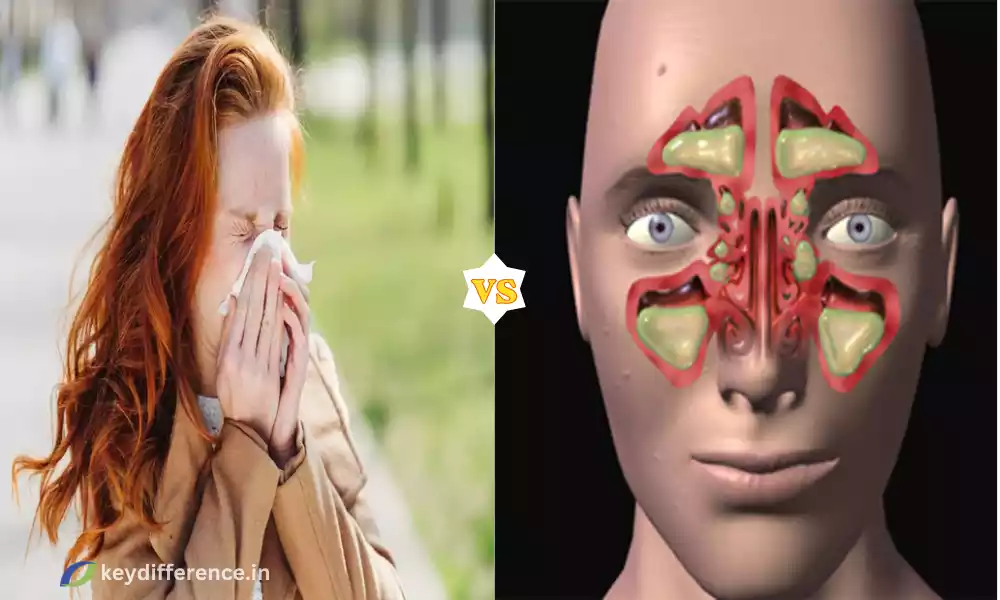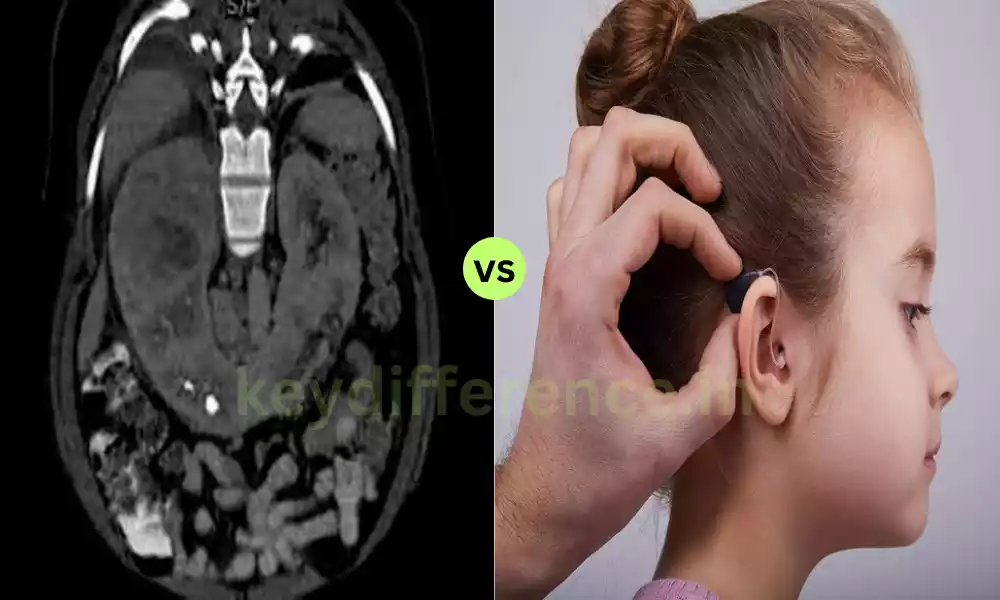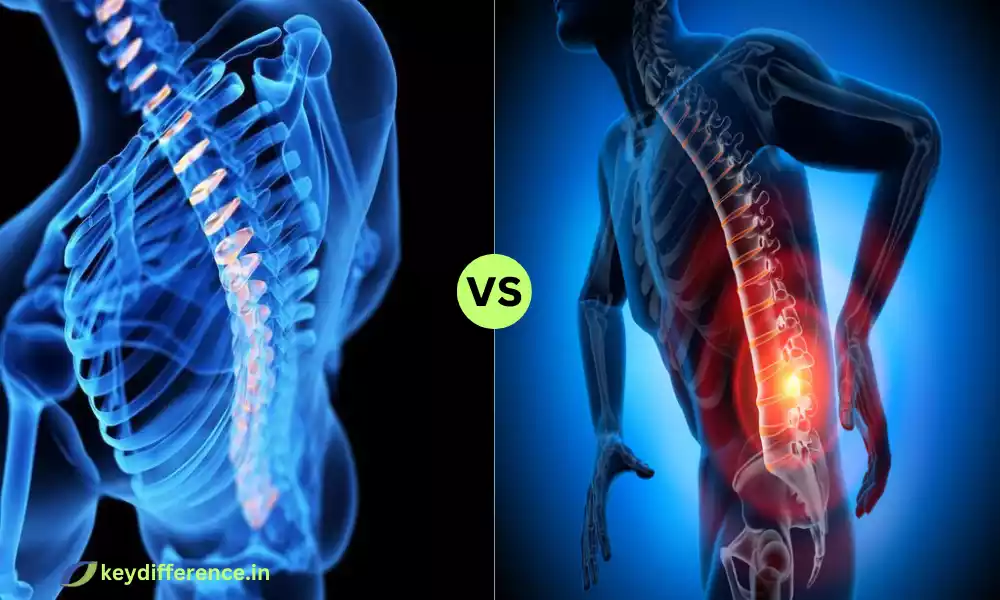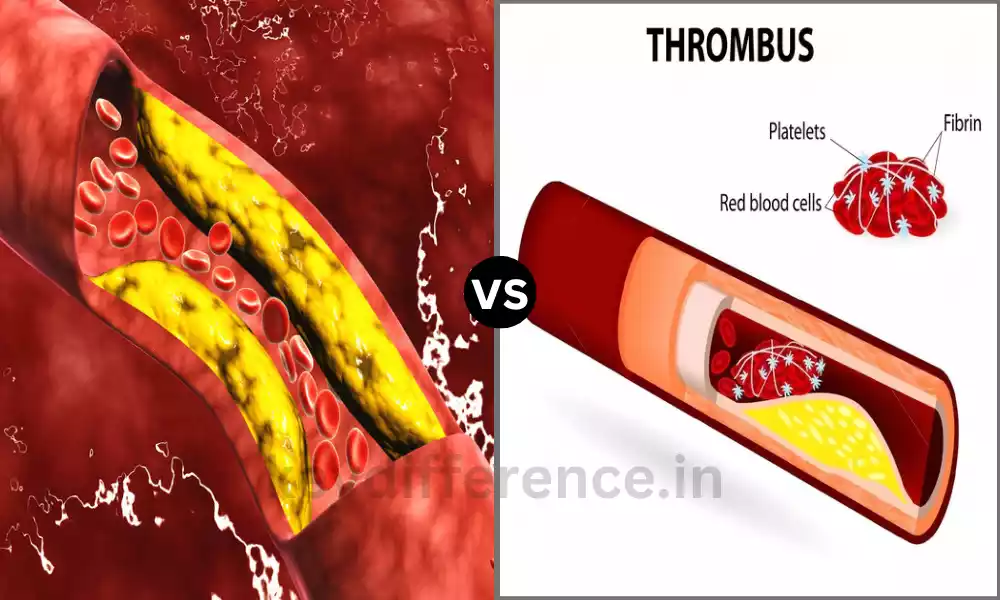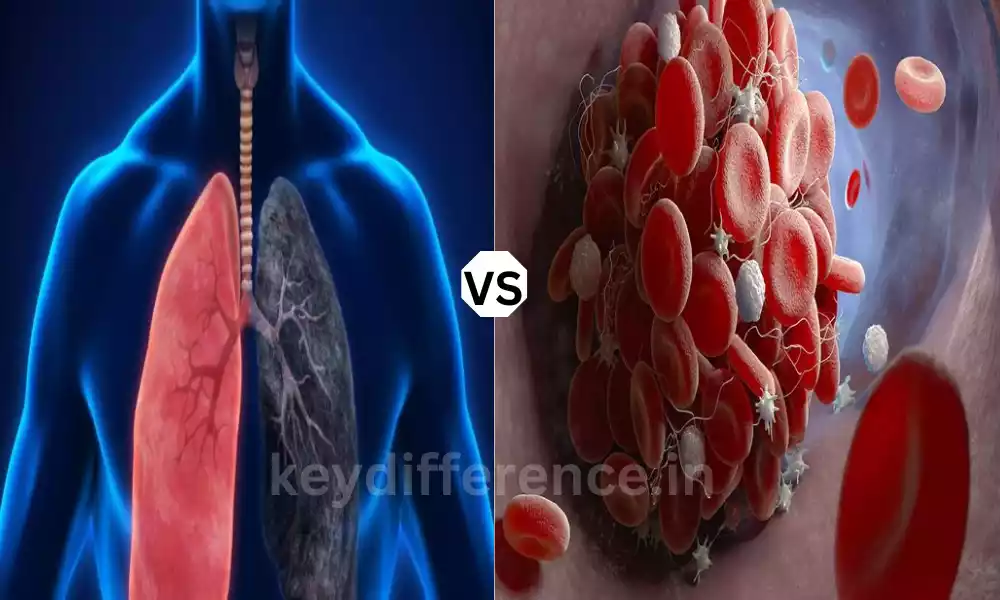Dysphonia and Dysarthria are two distinct disorders of speech each with their distinct characteristics, causes, and treatment strategies. Understanding the difference between these two conditions is essential for healthcare professionals as well as those who suffer from speech problems.
We will go over the definitions and signs, causes, diagnostics treatments, and the main distinctions between dysarthria and dysphonia which will highlight the importance of early detection and the appropriate treatment for those suffering from these disorders.
What is Dysphonia?
Dysphonia is a type of speech disorder that is defined by impaired or irregular voice production. It can cause changes in the quality, loudness, pitch, or general control of one’s voice. Dysphonia sufferers may be prone to hoarseness or roughness, tension, or breathiness in their voice.
This may impact the clarity and understanding of the speech. Dysphonia can be caused by many reasons, such as voice cord lesions, laryngitis disorders of the brain, or use and misuse.
It can seriously affect the ability of a person to communicate effectively. It may need evaluation and treatment from an expert in speech-language pathology or other healthcare professionals.

What is Dysarthria?
Dysarthria is a disorder of speech that affects the coordination and motor control of the muscles involved in speech production, which includes the tongue, lips vocal cords, and diaphragm.
This causes difficulties with articulation, resonance as well and prosody (the rhythm and intonation of speech). Dysarthria is a result of numerous neurological conditions including Parkinson’s disease, stroke, or cerebral palsy.
These conditions affect the normal function of the nerve system as well as its interaction with speech muscles. Dysarthria sufferers may display slow speech, poor articulation, and a lower level of intelligibility making it difficult to communicate clearly.
Treatment for dysarthria usually involves speech therapy as well as strategies to improve the clarity of speech and efficacy.

Importance of understanding the difference
Understanding the distinction between dysarthria and dysphonia is important for a variety of reasons:
- Accurate Diagnosis: The distinction between dysarthria and dysphonia can be vital in order for health professionals to precisely determine the cause of the speech disorder. An accurate diagnosis is the very first step to an effective treatment.
- Specific Treatment: Different disorders of speech require specific treatment methods. Knowing the specific disorder can help develop intervention strategies that tackle the root causes and symptoms efficiently.
- Qualities of life: problems can have a significant impact on an individual’s well-being, which includes their ability to communicate as well as take part in professional and social activities. Understanding the difference will ensure that people receive the best treatment to enhance their communication abilities.
- To avoid misdiagnosis: Without an understanding of the difference, it is possible to make a mistaken diagnosis that could lead to inappropriate or ineffective treatment options that don’t treat the root cause.
- Rehabilitation Plan: Speech-language pathologists as well as therapy professionals must design programmes for rehabilitation that can be adapted to the specific requirements of every patient. Knowing whether dysarthria or dysphonia is present is crucial to creating these individualized plans.
- Information and awareness: Informing families, individuals, and caregivers on the differences between dysphonia and dysarthria helps to create awareness and an understanding of the issues and helps to decrease the stigma and misinformation.
- Research and Development: The ability to differentiate between speech disorders is a significant part of the knowledge base in neurology and speech pathology and could lead to advances in diagnosis and treatment techniques.
- Improved Communication: In the end, being aware of these differences will lead to improved outcomes in communication for people with speech impairments and help them regain or improve their ability to communicate and communicate effectively with others.
Understanding the difference between dysphonia as well as dysarthria is essential to a correct diagnosis, efficient treatment, and better living conditions for people who suffer from these disorders.
It is vital that healthcare professionals, caregivers as well and the patients themselves be aware of the distinctions between these disorders to ensure that they receive the best possible treatment and assistance.
Comparison Table of Dysphonia and Dysarthria
Here’s a comparison table highlighting the key differences between dysphonia and dysarthria:
| Aspect | Dysphonia | Dysarthria |
|---|---|---|
| Definition | Impaired or abnormal voice production | Motor control and coordination issues in speech production |
| Primary Affected Area | Vocal cords and larynx | Muscles used for speech production, including lips, tongue, and diaphragm |
| Speech Characteristics | Altered pitch, loudness, and voice quality | Slurred speech, imprecise articulation, and altered prosody |
| Causes | Vocal cord nodules, laryngitis, neurological conditions, vocal misuse | Neurological conditions (e.g., stroke, Parkinson’s), brain damage, muscle weakness |
| Common Symptoms | Hoarseness, breathiness, roughness, voice strain | Slurred speech, unclear articulation, altered rhythm and intonation |
| Diagnosis | Examination by a speech-language pathologist, laryngoscopy, and voice assessment | Evaluation by a speech-language pathologist, neurological examination |
| Treatment Options | Voice therapy, vocal exercises, lifestyle changes | Speech therapy, motor speech exercises, communication aids |
| Impact on Communication | Impaired vocal quality and clarity, affecting speech intelligibility | Reduced speech clarity and comprehensibility, impacting effective communication |
| Rehabilitation | Voice therapy and techniques for improved vocal control | Speech therapy to improve articulation, resonance, and prosody |
Understanding these distinctions is crucial for accurate diagnosis and tailored treatment plans for individuals with dysphonia and dysarthria, as the two conditions have different underlying causes and manifestations, necessitating specific therapeutic approaches.
Impact on communication and daily life
The impact of dysphonia as well as dysarthria in communication and everyday life can be profound and stressful for people who are affected by these disorders of speech.
Here’s a brief overview of how each disorder impacts daily life and communication:
Dysphonia:
- Impact on Communication:
- Disturbed voice quality: Dysphonia may cause hoarseness, breathiness, roughness, or strain in the voice, which makes one’s speech sound unnatural and strenuous.
- Voice Control Reduction: People may have difficulty modulating loudness and pitch effectively impacting their expressiveness as well as emotional communication.
- Voice fatigue: speaking for prolonged periods of time can result in vocal fatigue and discomfort.
- Daily Life:
- Social Isolation: Those with dysphonia are likely to avoid social interaction because of concerns about their voice and may become isolated.
- Professional Issues: Communication problems could hinder performance at work, particularly in demanding vocal occupations.
- Emotional Impact: Self-esteem issues and anger are typical emotional effects, since people may feel self-conscious about how they speak.
Dysarthria:
- Impact on Communication:
- Problems with speech: Dysarthria often leads to speech that is slurred, which makes it difficult for other people to comprehend the message of the speaker.
- Insensible: A changed rhythm and prosody of speech may make it difficult to communicate effectively.
- Dysarthria: Dysarthria sufferers can be annoyed when others struggle to understand their speech.
- Daily Life:
- Communication Barriers: Dysarthria can make daily interactions, like ordering food or requesting directions, a challenge.
- Limitations on activities: People with an illness are advised to stay clear of situations that require extensive communication.
- A reduced degree of independence: Relying on others to communicate clearly could limit one’s freedom of speech.
The effects on everyday life can be significant, affecting individuals’ self-esteem, connections, interactions with others, and career opportunities.
It is important to recognize that early recognition of the issue, appropriate treatment, and the support of speech-language pathologists can dramatically enhance communication skills and the general level of living for those who suffer from dysarthria or dysphonia.
Common causes and associated conditions
Common Causes and Associated Conditions of Dysphonia:
- Vocal Cord Nodules: Non-cancerous, small development of the vocal cords, often due to abuse or excessive use of the voice.
- laryngitis: The larynx is inflamed (voice box) usually caused by infections caused by bacteria or viruses vocal strain, or irritating substances.
- Neurological Disorders: Conditions like Parkinson’s disease, multiple sclerosis, or amyotrophic lateral degeneration (ALS) can impact the muscles and nerves that are involved in producing voice.
- Gastroesophageal Reflux Disorder (GERD): Stomach acid refluxing into the throat may cause irritation and irritation of the vocal cords.
- Smoking and environmental factors: Smoking and exposure to environmental toxins may harm the vocal cords, and lead to chronic dysphonia.
- Vocal Cord Paralysis: The nerves that control the vocal cords could cause paralysis and vocal changes.
Common Causes and Associated Conditions of Dysarthria:
- Stroke: Brain damage, typically caused by a stroke can cause disruption to the neural pathways involved in speech motor control.
- Neurodegenerative diseases: Conditions like Parkinson’s disease, multiple sclerosis, and Huntington’s disease may cause the development of motor control issues that affect speech.
- Traumatic brain injury: Traumatic brain injuries can harm the brain areas that control motor functions, such as speech.
- Cerebral Palsy: The condition is present at birth and affects the control of muscles, which includes speech muscles.
- Amyotrophic Lateral Sclerosis (ALS): ALS, often referred to as Lou Gehrig’s disease is a neurodegenerative disorder that progresses and affects motor neurons, which include speech.
- Side Effects of Medication: Certain medications can cause muscular weakness or coordination issues that can cause dysarthria.
- Brain Tumors: Brain tumors can put pressure on or damage the brain regions that control speech.
Understanding the causes behind these disorders and related conditions is vital to diagnosing and managing dysarthria and dysphonia efficiently.
knowing the root cause of the problem can help guide the treatment process and provide important information for healthcare professionals treating these speech disorders.
Diagnosis and assessment methods
Diagnosis and Assessment Methods for Dysphonia:
- Voice assessment: Speech-language pathologists could evaluate a patient’s vocal quality pitch, volume, and resonance using perceptual analysis. They can compare the voice to norms for normal speech.
- Laryngoscopy: It involves inserting the laryngoscope into the nose or mouth to examine the vocal cords directly. It can help identify structural problems and evaluate the function of the vocal cord.
- Acoustic Analysis: With the help of specialized equipment and software acoustic measurements from the vocal voice including the pitch, jitter, or shimmer, can be measured to give objective information about the quality of the voice.
- Patient Histories: Gathering information on the medical history of the patient, the way they speak, as well as their environment, like the use of tobacco or exposure to irritating substances is vital to determine the root of the problem.
Diagnosis and Assessment Methods for Dysarthria:
- Clinical evaluation: A speech-language pathologist conducts a thorough assessment to assess the patient’s speech and voice, which includes articulation, resonance, voice quality, and prosody.
- Neurological Examining: Since dysarthria is typically caused by neurological disorders neurologists may conduct an exam to evaluate motor function, reflexes, and coordination.
- Imaging studies: MRI and CT scans can be utilized to see the brain and detect structural anomalies, like lesions, tumors, or damaged areas.
- Electromyography (EMG): EMG analyzes the electrical activity of those muscles that are involved in the production of speech, assisting in determining muscles that are weak or inactive.
- Speech and Language Assessment: In addition to testing cognitive, language, and speech assessments can be made to assess the broader effects of the disease on speech.
- Acoustic Analysis and Voice: Similar to dysphonia evaluation, acoustic indicators of speech, such as volume, pitch, and speech speed can be analyzed to gather objective information about speech specifics.
Diagnosing dysarthria or dysphonia generally requires a combination of these tests and specific tests selected in accordance with the clinical signs and possible underlying causes.
An accurate diagnosis is crucial in determining the best treatment strategy and rehabilitation plans to meet the person’s specific needs.
Potential co-occurrence with other speech disorders
Dysphonia sufferers can sometimes be affected by other speech disorders. This could make their condition more difficult and require additional treatment.
A few of the possible co-occurring disorders are:
Dysphonia:
- Voice disorders: Dysphonia in itself can be an audio-related disorder, however, it can also co-occur with vocal disorders, like the vocal folds becoming paralyzed, or polyps or nodules.
- Resonance Disorders: The changes in resonance of the voice can impact the speech quality, especially in situations where vocal fold vibrations are disturbed.
- Articulation Disorders: When the quality of vocal sounds is impaired to the point of reducing accuracy in articulation, it could cause co-occurring articulation problems.
Dysarthria:
- Apraxia of Speech: The condition of Apraxia is one that causes a motor disorder that can be co-occurring with dysarthria. It makes it challenging for people to organize and execute precisely the movements required for speech.
- Troubles with Fluency: Dysarthria could cause speech disfluencies and speech, which can cause the occurrence of stuttering and disarray.
- Vocal Disorders: Dysarthria could also affect voice quality and resonance, which can lead to vocal disorders, in addition to motor control problems.
- Phonological and Articulation Conditions: Dysarthria can affect the phonological process and articulation which can lead to co-occurring articulation issues and Phonological disorders.
The co-occurring of these speech problems can make the assessment and treatment more difficult because multiple aspects that affect speech and language are affected.
Speech-language pathologists as well as other health professionals play a crucial role in identifying these co-occurring disorders in order to offer a comprehensive and effective treatment.
Similarities Between Dysphonia and Dysarthria
While they are not distinctive speech problems, dysarthria as well as dysphonia have some commonalities, such as:
- Effects on communication: Dysarthria and dysphonia can greatly affect the ability of a person to effectively communicate. Intelligibility and quality of speech are affected in both cases which makes it difficult for others to comprehend the person affected.
- Speech Therapy: The two disorders typically benefit from speech therapy as well as rehabilitation. Speech-language pathologists are able to help people who suffer from dysarthria or dysphonia improve their voice clarity, speech quality, and overall communication abilities by focusing their intervention.
- Potentially Underlying Causes: Conditions or diseases that affect the brain are frequent underlying reasons for both dysphonia and dysarthria. For example, disorders like Parkinson’s disease sclerosis, or stroke may cause motor control problems (dysarthria) along with vocal cord problems (dysphonia).
- Effects on Functionality: Dysphonia, as well as dysarthria, can have a major impact on the daily routine and quality of life. They could experience limitations in social interactions, workplace-related activities, and general autonomy.
- Multidisciplinary Methodology: The assessment and treatment of dysphonia as well as dysarthria typically require an approach that is multidisciplinary. Alongside speech-language pathologists, patients may also consult neurologists, otolaryngologists, and other health professionals to determine the underlying causes, and offer complete care.
- Co-occurrence with other speech disorders: The dysarthria-related dysphonia is able to co-occur in conjunction with speech-related disorders including speech disorders or difficulties with fluency. This may complicate how the patient is treated and could need to be managed by a variety of issues related to speech.
While dysarthria and dysphonia share these features, it’s important to understand their distinct characteristics with respect to the principal affected areas, the causes, and speech characteristics for a proper diagnosis and treatment.
Conclusion
Dysarthria and dysphonia, both speech disorders differ in their principal affected areas, their causes, and speech characteristics. Understanding the differences is crucial to ensure a precise diagnosis and individualized treatment strategies.
Both of them have a major impact on communication as well as daily life and often require multidisciplinary treatment and rehabilitation. By recognizing the different characteristics and taking care to address the individual needs of those who suffer from dysarthria and dysphonia they can improve their communication capabilities and the overall quality of their lives.


